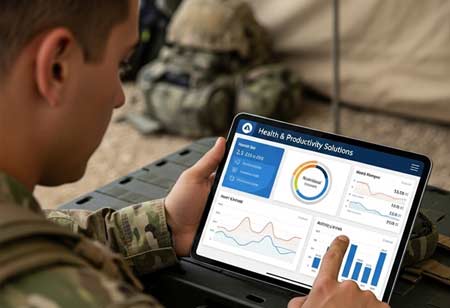The aviation services sector has entered an era of profound change, driven by the growing need for efficiency, sustainability, and customer-centric innovation. Today’s landscape is far more dynamic than ever before as the industry navigates complex challenges while capitalizing on emerging technologies to enhance its services. From smarter operations to elevated passenger experiences, the sector embraces opportunities that promise to redefine how we travel.
Shaping the Passenger Journey with Personalization and Operational Efficiency
An unwavering focus on personalization is at the heart of the aviation service revolution. The days when air travel was a one-size-fits-all experience are quickly fading. Today, passengers expect tailored services that cater to their individual needs. Airlines leverage artificial intelligence (AI) and data analytics to offer highly customized travel experiences. From personalized recommendations for seating preferences to curated in-flight entertainment options, digital tools are helping airlines predict and meet their customers' unique demands.
Beyond the passenger-facing innovations, operational efficiency is another critical area of focus. Airlines' and airports' back-end operations are undergoing significant transformations, largely driven by automation and machine learning. Tasks that once required manual intervention—such as baggage handling and flight scheduling—are increasingly being managed by advanced systems that optimize every process step. These advancements reduce human error and streamline operations, reducing delays and ensuring a smoother experience for travelers.
Also, AI is being used in predictive maintenance, which helps forecast potential aircraft issues before they become problematic. Using data collected from sensors on planes, AI can detect minor irregularities that may indicate the need for repairs. This proactive approach reduces downtime, enhances safety, and improves the reliability of the overall service.
Overcoming Industry Challenges with Cybersecurity and Labor Shortages
While the growth of digital technologies has unlocked numerous opportunities, it has also brought new challenges—particularly cybersecurity. As aviation services become increasingly reliant on digital infrastructures, the risk of cyber threats intensifies. The sector's dependence on interconnected systems—from ticketing and baggage tracking to flight operations—makes it an attractive target for cybercriminals.
Aviation service providers are adopting more robust cybersecurity protocols to counteract these threats, including end-to-end encryption and blockchain technology. Blockchain, in particular, is being explored for its potential to secure critical data, such as passenger information and flight records, by providing a decentralized, tamper-proof system. These innovations aim to protect the integrity of operations and passengers' privacy, ensuring that trust in the sector remains steadfast.
In addition to cybersecurity, the aviation industry is grappling with a significant labor shortage. The pandemic’s disruptions left many workers in the sector reassessing their careers, resulting in a thinning of the workforce. The shortage of pilots, maintenance technicians, and ground crew has made it increasingly difficult to meet rising demand. Airlines are responding with aggressive recruitment drives and investing heavily in training and development to build a more resilient workforce.
Automation is also helping to alleviate some of these workforce challenges. Self-service kiosks, AI chatbots for customer service, and automated baggage systems are improving efficiency and reducing reliance on human labor in certain areas. This allows human resources to be focused on tasks that require more specialized skills while advanced technologies handle routine processes.
Embracing Sustainability and Future Growth Opportunities
These challenges present opportunities for stakeholders to gain a competitive edge, particularly through sustainability and technological innovation. The demand for greener air travel is stronger than ever, with passengers increasingly expecting airlines to prioritize environmental responsibility. In response, the aviation industry is embracing a range of sustainable practices.
One of the most significant advancements in this area is the development and adoption of sustainable aviation fuels (SAF). SAF, which is made from renewable sources like plant oils and algae, has the potential to reduce carbon emissions from air travel significantly. While the technology is still in its early stages, the aviation industry is investing heavily in research to scale up its use. The global transition to SAF will help airlines meet environmental goals and offer an opportunity for innovation in fuel sourcing and production.
Airports also strengthen their sustainability efforts by incorporating eco-friendly technologies into their operations. Solar-powered terminals, energy-efficient lighting, and the electrification of ground support vehicles are just a few examples of how airports are reducing their carbon footprints. By integrating these green technologies, service providers are reducing operating costs and improving their appeal to environmentally conscious travelers.
Another area of opportunity lies in the increasing reliance on data to enhance operational performance. The rise of big data analytics allows airlines to make smarter, more informed decisions, whether optimizing flight routes to minimize fuel consumption or predicting maintenance needs before they arise. Data is also being used to enhance the passenger experience, with predictive analytics enabling airlines to offer tailored services and promotions at just the right moment.
Technology's potential to improve operational efficiency and customer satisfaction is enormous. For example, augmented reality (AR) is starting to be used in some airports to help passengers navigate terminals more easily. Passengers can now use their smartphones to view AR navigation guides, helping them find the fastest routes to their gates or baggage claim areas. Innovations like these enhance the passenger experience while driving efficiencies for airlines and airports.









